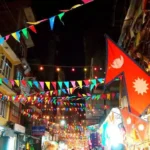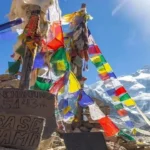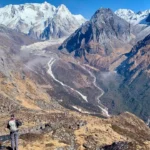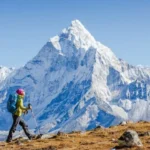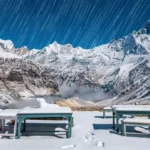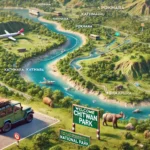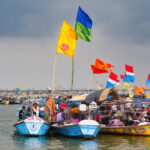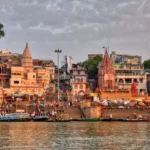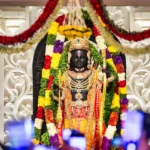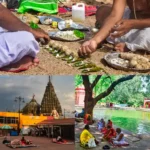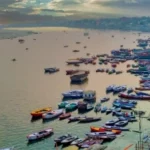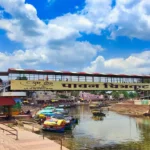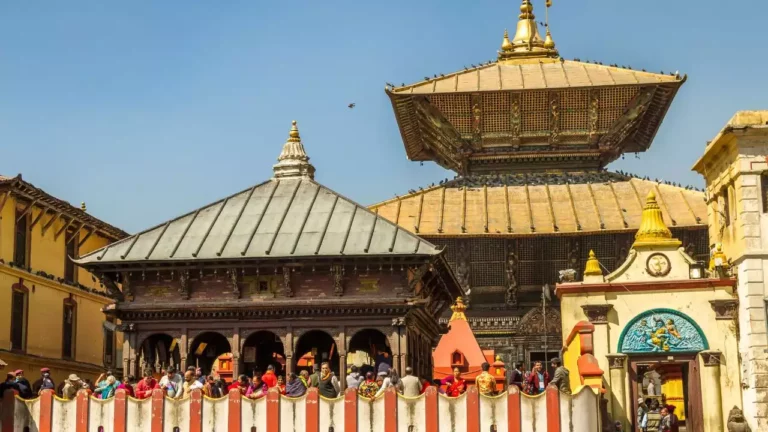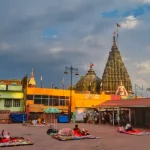2. Top UNESCO World Heritage Sites in Kathmandu Valley
The Kathmandu Valley boasts one of the highest concentrations of UNESCO World Heritage Sites in the world. Each site offers a glimpse into Nepal’s deep-rooted spiritual and architectural traditions. Here’s a closer look at the valley’s top cultural gems:
Kathmandu Durbar Square
Located in the heart of the capital, Kathmandu Durbar Square is a historic palace complex that once served as the royal seat of the Malla kings. It’s a masterpiece of Newari architecture, featuring intricately carved wooden windows, ancient temples, and the famed Kumari Ghar—the residence of the Living Goddess. Though partially damaged in the 2015 earthquake, restoration work continues to bring back its former glory.
Highlights:
- Taleju Temple
- Hanuman Dhoka Palace
- Kumari Chowk (Living Goddess)
Patan Durbar Square
Also known as Lalitpur, Patan is renowned for its artistic heritage. Patan Durbar Square is a compact yet stunning plaza filled with beautifully preserved temples and a royal palace museum. The Krishna Mandir, built entirely from stone, stands as a testament to the city’s craftsmanship.
Highlights:
- Krishna Mandir
- Hiranya Varna Mahavihar (Golden Temple)
- Patan Museum
Bhaktapur Durbar Square
A short drive from Kathmandu, Bhaktapur feels like a living museum. The square is famous for its medieval architecture, red brick walkways, and vibrant local culture. Unlike its more modern neighbours, Bhaktapur has preserved much of its ancient charm.
Highlights:
- 55-Window Palace
- Nyatapola Temple (five-storied pagoda)
- Vatsala Temple and the Lion’s Gate

These squares not only reflect Nepal’s architectural brilliance but also serve as living cultural hubs where festivals, rituals, and daily life unfold. Visiting all three offers a layered understanding of the Kathmandu Valley’s royal and religious legacy.
3. Sacred Sites and Spiritual Landmarks
Kathmandu Valley isn’t just a feast for the eyes—it’s a sanctuary for the soul. As a spiritual crossroads of Hinduism and Buddhism, the valley is home to some of the most revered and visually stunning sacred sites in South Asia. These landmarks aren’t just places of worship—they are centres of culture, pilgrimage, and peace.
Swayambhunath Stupa (Monkey Temple)
Perched on a hill overlooking Kathmandu, Swayambhunath is one of the oldest religious sites in Nepal. With its all-seeing Buddha eyes painted on a golden spire, it’s a symbol of spiritual awakening. The site is affectionately nicknamed the “Monkey Temple” due to the holy monkeys that inhabit the complex.
Why visit?
- Panoramic views of the city
- A blend of Hindu and Buddhist symbolism
- Peaceful walking paths and shrines around the hill
Boudhanath Stupa
This massive white dome, crowned with a gilded tower, is one of the largest spherical stupas in the world and the heart of Tibetan Buddhism in Nepal. Surrounded by prayer wheels and monasteries, Boudhanath is a meditative haven where monks chant and devotees circle the stupa in quiet reverence.
Don’t miss:
- The evening butter lamp lighting ritual
- Rooftop cafés with a view of the stupa
- Tibetan art and handicrafts in nearby shops
Pashupatinath Temple
Situated on the banks of the sacred Bagmati River, Pashupatinath is Nepal’s holiest Hindu temple, dedicated to Lord Shiva. It’s a bustling spiritual hub and an important cremation site, giving visitors a powerful insight into Hindu rituals surrounding life and death.
What to expect:
- Golden pagoda-style temple architecture
- Ascetics (sadhus) meditating near the ghats
- Maha Shivaratri festival atmosphere (if you’re lucky!)
Changu Narayan Temple
Often overshadowed by the big-name sites, Changu Narayan is one of Nepal’s oldest temples and a hidden gem for culture lovers. Perched on a ridge near Bhaktapur, it’s dedicated to Lord Vishnu and houses some of the finest stone carvings in the valley.
Highlights include:
- Richly detailed lintels and statues
- A peaceful, less touristy vibe
- Traditional Newari village nearby

These sacred sites show how deeply spirituality is woven into the daily life of the Kathmandu Valley. Each one offers its kind of serenity, symbolism, and story.
4. Exploring the Three Ancient Cities
The soul of the Kathmandu Valley lies in its three ancient royal cities—Kathmandu, Patan (Lalitpur), and Bhaktapur. Each city has its own unique rhythm, history, and architectural flair, yet together they weave the valley’s rich cultural tapestry.
Kathmandu: The Capital of Contrasts
Kathmandu is where ancient meets modern in the most fascinating ways. It’s Nepal’s capital and largest city, buzzing with rickshaws, street vendors, and centuries-old temples tucked between modern buildings.
Why it’s special:
- Home to major attractions like Thamel, Kathmandu Durbar Square, and the Garden of Dreams
- A lively melting pot of cultures, religions, and cuisines
- Gateway to trekking routes and remote Himalayan adventures
Experience tip: Start your day with a rooftop breakfast in Thamel, then walk through the backstreets to discover hidden courtyards and local shrines.
Patan: The City of Artisans
Just across the Bagmati River, Patan (Lalitpur) is a more relaxed, artistic counterpart to Kathmandu. It’s famous for its metalwork, woodcarving, and stunning temples that showcase Newar craftsmanship at its finest.
Highlights:
- The exquisite Patan Durbar Square
- Buddhist monasteries like Hiranya Varna Mahavihar (Golden Temple)
- Local workshops where you can see artisans handcrafting statues and jewellery
Vibe: Think cobbled lanes, artisan studios, and a laid-back pace—perfect for travellers who love history with a touch of quiet charm.
Bhaktapur: The Living Museum
Stepping into Bhaktapur feels like travelling back in time. With its vehicle-free streets, red-brick architecture, and preserved medieval layout, this city is a cultural time capsule.
Don’t miss:
- Nyatapola Temple: A five-tiered pagoda and engineering marvel
- Pottery Square: Watch clay take form under skilled hands
- Bhaktapur Durbar Square: Brimming with palaces, statues, and stone guardians
Best for: History buffs, photographers, and anyone who wants to soak up authentic Newari culture with fewer crowds.

Each city is distinct but collectively forms the beating heart of the Kathmandu Valley. Exploring all three gives you the fulfilment of Nepal’s art, religion, and history—up close and personal.
5. Local Culture and Newari Heritage
The Kathmandu Valley wouldn’t be what it is without the Newar people, the valley’s original inhabitants and cultural architects. Their deep-rooted traditions, masterful craftsmanship, and vibrant festivals are the soul of the region, offering travellers a rich immersion into authentic Nepali life.
Who Are the Newars?
Newars are an ethnic group known for their unique blend of Hindu and Buddhist practices, intricate architecture, and a lifestyle that celebrates art in every form. From temples and palaces to food and festivals, the Newar influence can be seen everywhere across the valley.
Festivals: A Year-Round Celebration
The Newari calendar is packed with festivals that are both spiritual and spectacular. Many of these events are centuries old and still celebrated with the same passion and pageantry.
Popular Newari festivals include:
- Indra Jatra (Kathmandu): Honoring the god of rain with masked dances, chariot processions, and the appearance of the Living Goddess.
- Bisket Jatra (Bhaktapur): A dramatic celebration of the New Year with massive wooden chariots and tug-of-war battles.
- Yomari Punhi (Patan): A harvest festival featuring the sweet rice dumpling called yomari.
These festivals are visual feasts and fantastic opportunities to engage with locals and understand their deep-rooted traditions.
Newari Cuisine: A Flavourful Adventure
Newari food is bold, spicy, and rich in variety. It’s an essential part of local identity is and often shared during religious rituals and festivals.
Must-try dishes:
- Newa Khaja Set (Samay Baji): A traditional platter with beaten rice, buffalo meat, black soybeans, and more.
- Yomari: A sweet steamed dumpling filled with jaggery and sesame seeds.
- Chatamari: Often called the “Newari pizza,” it’s a rice flour crepe topped with eggs, meat, and spices.
Tip: Head to a local bhoye (feast) or heritage restaurant in Patan or Bhaktapur to sample authentic flavours.
Art, Architecture & Craftsmanship
Newari architecture is a cornerstone of the valley’s visual identity. You’ll recognize it by the intricate wood carvings, tiered temples, and ornate courtyards.
What to look for:
- Carved wooden windows and doors (especially the famed “peacock window” in Bhaktapur)
- Bronze and copper statues in local shops and monasteries
- Pagoda-style temple structures unique to the valley

Experiencing Newari heritage is like stepping into a living art gallery, where every dish, building, and ritual tells a story. It’s one of the most rewarding aspects of exploring the Kathmandu Valley.









